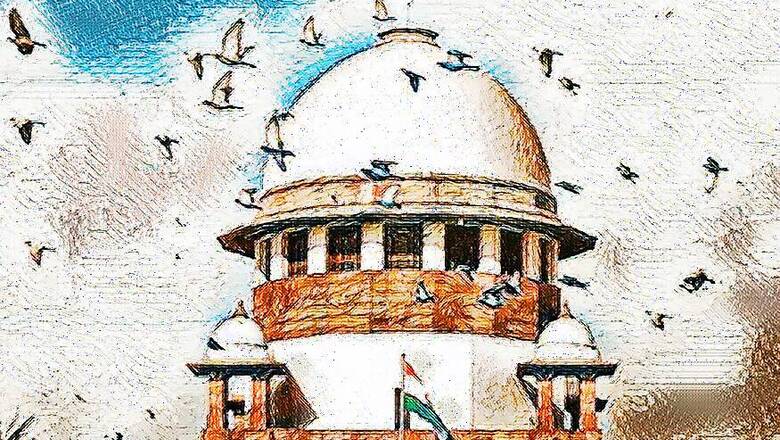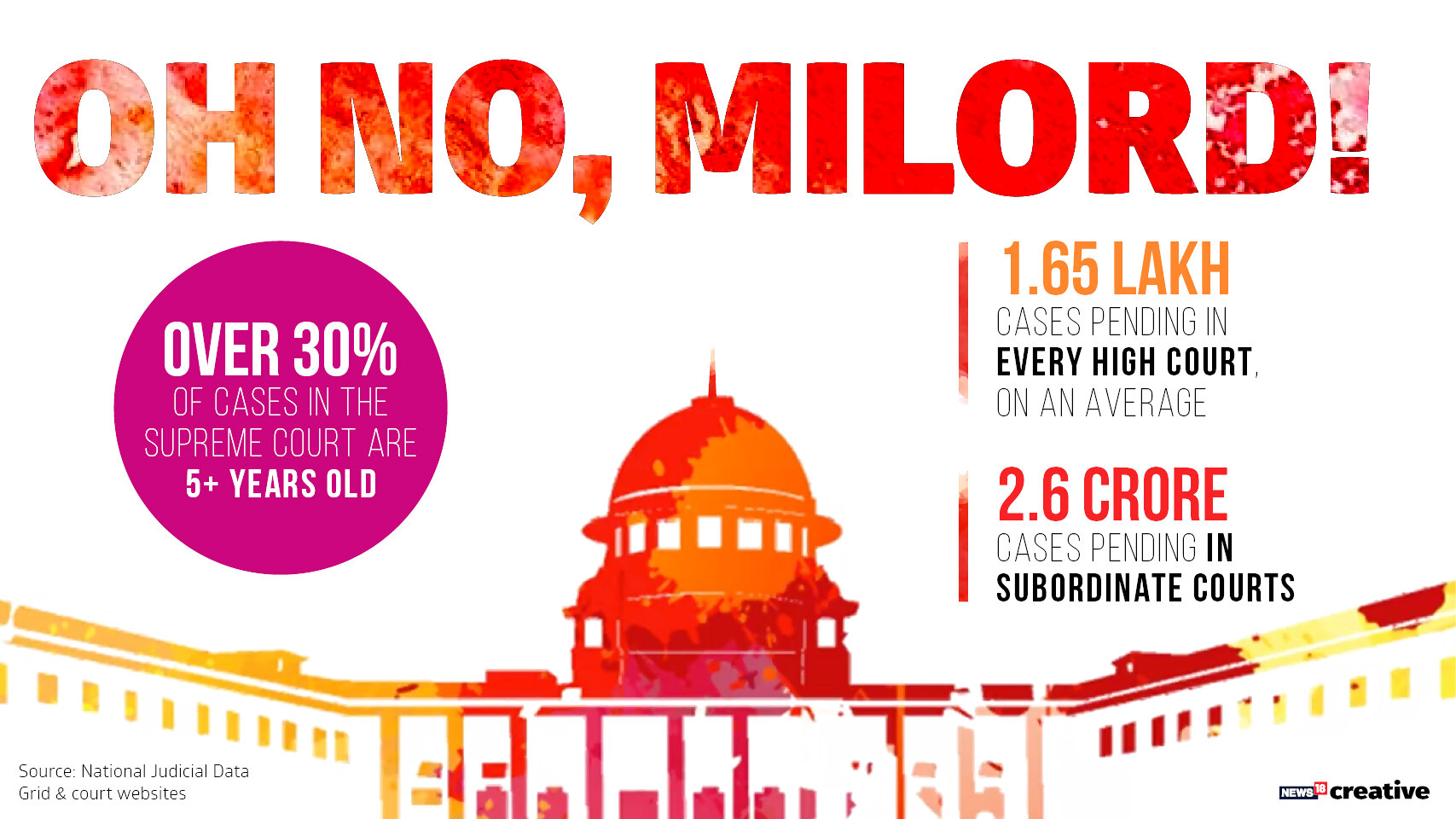
views
New Delhi: The latest statistics on pendency of cases, at all levels of courts across the country, makes it evident that a lot requires to be done to fulfil the mandate of speedy justice.
The data, collated from the web-portal of National Judicial Data Grid (NJDG) and the court websites, indicates not much has changed in the last few years although the huge pendency of cases have taken the centre stage in several deliberations between the judiciary and the government.
Over 30% of cases in the Supreme Court are more than five-year-old
As per the information made available by the Supreme Court of India to the Union Ministry of Law and Justice, the total number of pending cases in the apex court as on December 18 was 54,719.
The number of cases pending in the court for more than 5 years was 15,929, which is more than 29 per cent of the cases. Those waiting for disposal for more than 10 years constituted 1,550 cases.
If the data were compiled separately for cases pending for more than 5 years and more than 10 years respectively, over 32 per cent cases i.e. around one-third of total cases in the top court have been hanging fire for more than 5 years.
Recently, Chief Justice of India Dipak Misra has written to chief justices of all 24 high courts to have benches even in the vacation to expedite criminal appeals and decide cases on a fast-track basis. There is also an Arrears Committee in the Supreme Court to formulate steps for reducing pendency of cases in high courts and district courts.
But in the Supreme Court, the CJI happens to be the ‘first among the equals’ in his judicial powers. Therefore, a consultative and collaborative approach would be the need of the hour to make an appeal to the brother and sister judges in the apex court for speeding up the disposal of old cases. Moreover, there are six vacancies of judges in the apex court and filling them up would definitely be helpful in tacking the pendency.
On average,1.65 lakh cases pending in every high court
According to the statistics available on NJDG, as on December 26, more than 34.27 lakh cases were pending in high courts, excluding High Courts of Allahabad and Jammu & Kashmir. Data available on the Uttar Pradesh government’s law department’s website disclosed pendency of more than 3.2 lakh.
Thus, a total of 37.47 lakh cases are pending in 23 high courts, with an average of around 1.65 lakh each.
The data further showed that out of 34.27 lakh pending cases, 7.46 lakh cases – almost 22 per cent, were 5 to 10 years old. Another 6.42 lakh cases, which constituted around 19 per cent were more than 10 years old. Combined together, 40 per cent pending cases in the high courts have been waiting disposal for at least 5 years now.
A look at the working strength of the high courts may indicate one of the chief reasons for this whopping pendency. At present, the high courts are working with less than two-third of their approved strength.

There is a staggering vacancy of 395 judges against the approved strength of 1,079 across the 24 high courts – a shortage of more than 36 per cent. There are certain high courts, such as Calcutta HC, Karnataka HC, Chhattisgarh HC, Manipur HC and Meghalaya HC where the vacancy is almost 50 per cent of the approved strength of judges. Further, nine high courts do not have the regular chief justices appointed for want of recommendation from the Supreme Court collegium, headed by the CJI.
2.6 crore cases pending in subordinate courts across country
Showing no sign of improvement from the previous three years, the pendency in subordinate courts remains at an alarming figure of 2.6 crore as on December 26. This figure does not include cases pending in Arunachal Pradesh, Nagaland, Puducherry and Lakshadweep,
The backlog has remained between 2.2 to 2.8 crore in the last three years and despite all the measures adopted, it has shown no sign of decline for the year 2017.
Uttar Pradesh topped this list with 61.58 lakh pending cases – almost one-fourth of the total number. This is followed by Maharashtra (33.22 lakh), West Bengal (17.59 lakh), Bihar (16.58 lakh) and Gujarat (16.45 lakh). This has been the trend in the last three years and the top five states with enormous pendency have just maintained their position.
Subordinate judiciary, unfortunately, suffers from the same handicap that has been plaguing the functioning of high courts – acute shortage of judicial officers.
According to the information made available by the high courts and respective state governments, as on November 30, the sanctioned strength of Judicial Officers of District and Subordinate Courts was 22,677, and the vacant posts was 5,984 (26.38%).
Uttar Pradesh, Bihar and Gujarat, three states among the five with maximum pendency, also figured in the list of top five states with highest vacancy of judicial officers.
The statistics are a testimony of the fact that an improvised methodology will have to be resorted to for unclogging the judicial system. There have been conferences, letters and projects between the government and the judiciary but the momentum is still lacking while the backlog soars.
With increase in awareness, litigations are bound to go up and thus, it is trite that a multi-pronged approach is required to simultaneously reduce the pendency with promptitude.
Filling up of vacancies in subordinate judiciary and the manner of their functioning is primarily the responsibility of the high court concerned and the state governments, whereas it is the Supreme Court Collegium that makes the recommendation for appointment of judges in high courts and the apex court.
All the stakeholders ought to put their heads together, ignoring the technicalities and turf, if access to justice becomes a realisation and not just a distant goal after six decades of independence. And the justice must come when it matters the most, for ‘justice delayed is justice denied’.


















Comments
0 comment